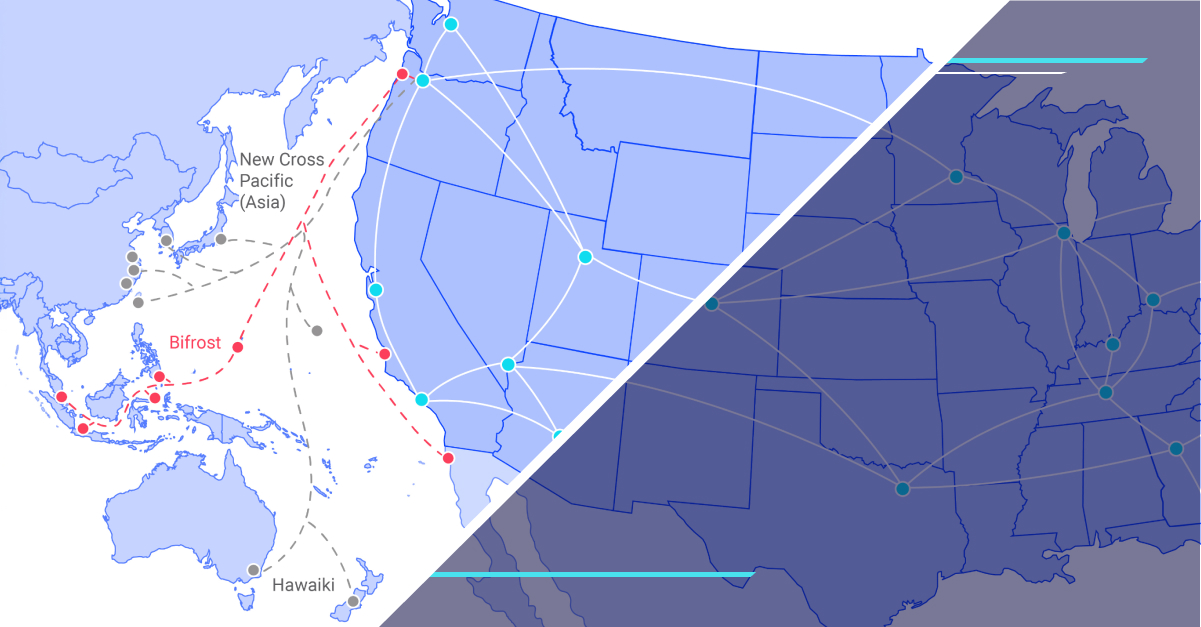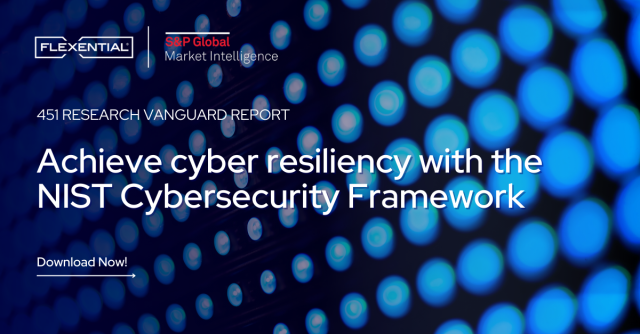Mastering IT resilience: A guide to achieving business continuity
It only takes one unexpected disruption to realize how much your business relies on its IT infrastructure. Maybe it’s a server outage that catches you off guard, a cyberattack that hits in the middle of the night, or even a storm that knocks systems offline. When technology falters, the ripple effects touch every part of your company, from customers to employees to your bottom line.

This is where IT resilience really shows its value. By planning ahead and building resilience into your IT infrastructure, you can minimize disruptions, keep your business running smoothly, and protect your reputation, even when the unexpected happens.
In this blog, we’ll break down what IT resilience means for you and your organization. You’ll get practical steps and clear advice to help strengthen your IT foundation and feel more prepared for whatever comes next.
What is IT resilience?
If you've ever worried about downtime or data loss, you already understand why IT resilience matters. IT resilience means your technology infrastructure can absorb disruptions and bounce back quickly, whether a power outage, security breach, or system failure. More importantly, it means your team knows exactly what to do when something goes wrong, so you can protect what matters most to your business.
Key components of IT resilience
Real IT resilience comes from focusing on a few core elements:
- Redundancy: Have backups, data copies, and alternate connections ready, so a single failure won’t take you offline.
- High availability: Design systems to stay accessible and operational, even if one part goes down.
- Disaster recovery: Create clear disaster recovery plans to restore operations after a crisis.
- Security: Protect your infrastructure from evolving threats.
- Scalability: Make sure systems can handle growth and change.
- Automation: Use tools and processes to respond quickly and consistently.
- Monitoring: Stay aware of your environment’s health, spotting issues before they become outages.
These pieces work together to give your business the flexibility and confidence you need, creating true resilience against risks that could disrupt your operations.
The business case for IT resiliency
If you've ever dealt with an unexpected outage or security incident, you know how quickly costs can add up. Lost sales, frustrated customers, idle employees, and emergency response efforts; the financial impact goes far beyond just getting systems back online.
IT resilience helps you protect your business from those moments. When your systems are ready for setbacks, whether it’s a cyberattack, hardware failure, or natural disaster, you avoid costly downtime and keep operations moving. Data protection becomes a core part of your strategy, keeping information secure and accessible.
Developing an IT resilience strategy
Building real IT resilience isn’t about luck or hoping things go smoothly. It’s about making thoughtful choices and preparing for challenges before they catch you off guard. You don’t need to overhaul everything at once, but a few focused steps can make all the difference for your business.
Determining the impact of failure
Start by asking what would happen if a key system failed right now. Which applications and data can’t your business live without? What would it cost to lose them, even briefly? A risk assessment helps you spot your biggest vulnerabilities and prioritize your efforts.
Creating a disaster recovery plan
Once you know where you’re at risk, map out your response. Your disaster recovery plan should be clear, practical, and easy to follow. Assign responsibilities, test your plan regularly, and make sure everyone knows their role. The more confident your team feels, the smoother your recovery will be.
Looking for a proven framework? Download the Cyber Resiliency with NIST report to learn how to align governance, prioritize risk, and build a mature, responsive approach to protecting your business.
Steps to building a resilient infrastructure
Turning IT resilience from an idea into reality starts with a solid infrastructure. A few well-placed investments and some careful planning, especially around data resiliency and data recovery, can help your business weather almost any storm.
Designing data centers for high availability
High availability means your critical systems stay online, even when something goes wrong. To get there:
- Use redundant power and network connections. This way, if one path fails, another takes over instantly.
- Choose geographically diverse locations for backup and recovery. If a problem affects one site, you have another ready to go.
- Implement automatic failover and load balancing so that if a server or system has issues, traffic is rerouted without disruption.
- Regularly test backup generators, cooling systems, and network switches to catch problems before they turn into outages.
Implementing advanced security measures
Security is a cornerstone of any resilient infrastructure. You want to prevent threats and be ready to respond if one slips through.
- Deploy firewalls, intrusion detection systems, and strong access controls to limit exposure.
- Use regular vulnerability scanning and patch management to close security gaps before attackers find them.
- Train employees on the latest phishing scams and cyber risks. Your people are often the first line of defense.
- Encrypt sensitive data, both at rest and in transit, to protect information even if a breach happens.
Implementing a multicloud strategy
Relying on a single platform can put your business at risk. A multicloud approach spreads your workloads across multiple environments, giving you greater flexibility and resilience.
- Develop processes for moving workloads between clouds, so you can adapt quickly as needs or conditions change.
- Monitor costs and performance across your entire environment, not just one piece. This gives you a clearer picture and helps you optimize for both resilience and efficiency.
- Set up automated backup and recovery processes that span all your cloud services, making it easier to recover if something goes wrong.
Successes & challenges in achieving IT resilience
As you work to strengthen your IT resilience, it’s helpful to recognize what’s working, and what often gets in the way.
Balancing cost and resilience
Resilience comes with a price. Deciding how much to invest can be tricky, especially when budgets are tight and leadership wants to see immediate ROI.
How to find balance
- Rank systems based on how much downtime would cost your business.
- Focus on high-impact areas first, like customer-facing services or critical data stores.
- Layer your investments: start with redundancy, then add security tools and automated recovery.
- Review costs regularly as you scale. Even small adjustments in configuration or cloud pricing can save money and improve reliability.
Managing legacy systems
Older systems may still run the heart of your operations but often weren’t built with resilience in mind.
Strategies to manage aging environments
- Identify which legacy components are most critical and most vulnerable.
- Consider wrapping them with modern tools like virtual machines or containerization.
- Set clear refresh timelines and milestones, so you’re not stuck patching the same old hardware forever.
- Where full replacement isn’t possible, apply protection measures like frequent backups and isolation layers.
The reality is that legacy systems often handle your most critical business functions. They're legacy because they work, not because they're outdated. The goal isn't to replace everything immediately, but to gradually modernize while protecting what you've already built. Start by documenting how these systems connect to everything else, then add protective layers around them while you plan for eventual upgrades.
Keeping up with emerging threats
Your infrastructure may be resilient, but threats are constantly evolving. That means staying alert and ready.
Staying ahead of new risks
- Use real-time monitoring and threat intelligence feeds to spot abnormal behavior fast.
- Update your disaster recovery plan when big threats emerge, such as ransomware or supply chain attacks.
- Invest in staff training so your team can recognize new attack types.
- Treat resilience as a continuous habit, not a one-time checklist.
Real-world examples of IT resilience
Here are two Flexential client stories where smart IT resilience planning made a real impact:
TCW
After a ransomware attack, TCW deployed Flexential’s disaster recovery services. The result: automatic failover to a secondary site, tested plans, and system access restored hours after the disruption.
“Our partnership with Flexential is more than a business transaction; it is collaborative journey. Flexential doesn’t just provide services; they immerse themselves in understanding our challenges and aspirations.”
— Steve Thompson, VP of IT at TCW
PetroChoice
PetroChoice shifted its critical workloads into Flexential’s hybrid solution with colocation, DRaaS, and managed services. That setup included geographically separated data centers, redundant power and cooling, and 24/7 monitoring—a recipe for unbroken operation and peace of mind
“Flexential offered our team peace of mind that our critical business environment would be available 24/7.”
— Jeff Linso, VP of IT and Security at PetroChoice
Collaborating with IT resilience experts
You don’t have to tackle IT resilience on your own. There’s real value in working with partners who’ve helped other businesses build strong, flexible systems and recover from tough situations. Sometimes, an outside perspective can help you see risks or solutions you might miss when you’re deep in day-to-day operations.
When you team up with IT resilience experts, you get:
- Strategy that fits you: True experts take time to learn how your business works, where your risks are, and what your goals look like.
- Disaster recovery that actually works: A good partner doesn’t just hand you a generic plan. They’ll help you craft clear, practical steps your team can follow when the pressure is on, and make sure everyone knows their role.
- Smart infrastructure design: Benefit from advice on well-designed data center layouts, network architecture, and how to use the cloud for more flexibility. The goal is to make your systems reliable, scalable, and ready for anything.
- Ongoing support: A good partner helps you adjust your approach as your business grows and as new threats or tech emerge.
- Access to the latest tools: Some technologies and solutions aren’t easy to evaluate or implement on your own. Experts can help you try out and adopt the latest options that fit your needs.
- Faster results: Experience means fewer bumps along the way. Experts know what works, what doesn’t, and how to get your strategy up and running with less trial and error.
- Focus for your team: By letting outside specialists handle resilience planning and response, your internal IT folks can spend more time on day-to-day business and innovation.
Great partners do more than fix technical problems; they help you build a culture of resilience. They can train your team, answer tough questions, and keep you moving forward, no matter how things change.
Final thoughts on IT resilience
IT resilience isn't about having perfect systems; it's about having systems that fail gracefully and recover quickly. The companies that handle disruptions best aren't the ones that never experience problems; they're the ones that bounce back faster and learn from each incident.
Explore more IT resilience resources
Ready to take the next step? Visit Flexential Data Protection Services to learn how we can help.
Let’s talk
Have questions? Reach out to our team. We’re here to help you plan, prepare, and build resilience into every part of your IT strategy.
FAQs
What is IT resilience?
IT resilience is your technology infrastructure's ability to withstand disruptions and recover quickly when something goes wrong. It goes beyond just having backups; it's about building systems that can adapt, absorb shocks, and keep your business running even during unexpected events like cyberattacks, hardware failures, or natural disasters.
Why is IT resilience important for businesses?
When your technology fails, everything else follows. Customer transactions stop, employees can't access critical systems, and your reputation takes a hit. IT resilience protects you from these cascading effects by ensuring your systems can handle disruptions gracefully. Resilient infrastructure gives you the confidence to grow, innovate, and take on new opportunities without constantly worrying about what could go wrong.
How does IT resilience differ from disaster recovery?
Disaster recovery is your plan for what to do after something bad happens—like restoring data from backups or switching to a backup site. IT resilience is broader: it's about building systems that prevent problems in the first place and can keep running even when components fail. Think of disaster recovery as your emergency response plan, while IT resilience is like building a house that can withstand storms.
What are best practices for improving IT resilience?
Focus on your most critical systems first, implement redundancy at multiple levels, automate as much as possible, and test everything regularly. Don't forget the human element: train your team, document your procedures, and make sure someone can step in when key people are unavailable. Most importantly, treat resilience as an ongoing process, not a one-time project.






